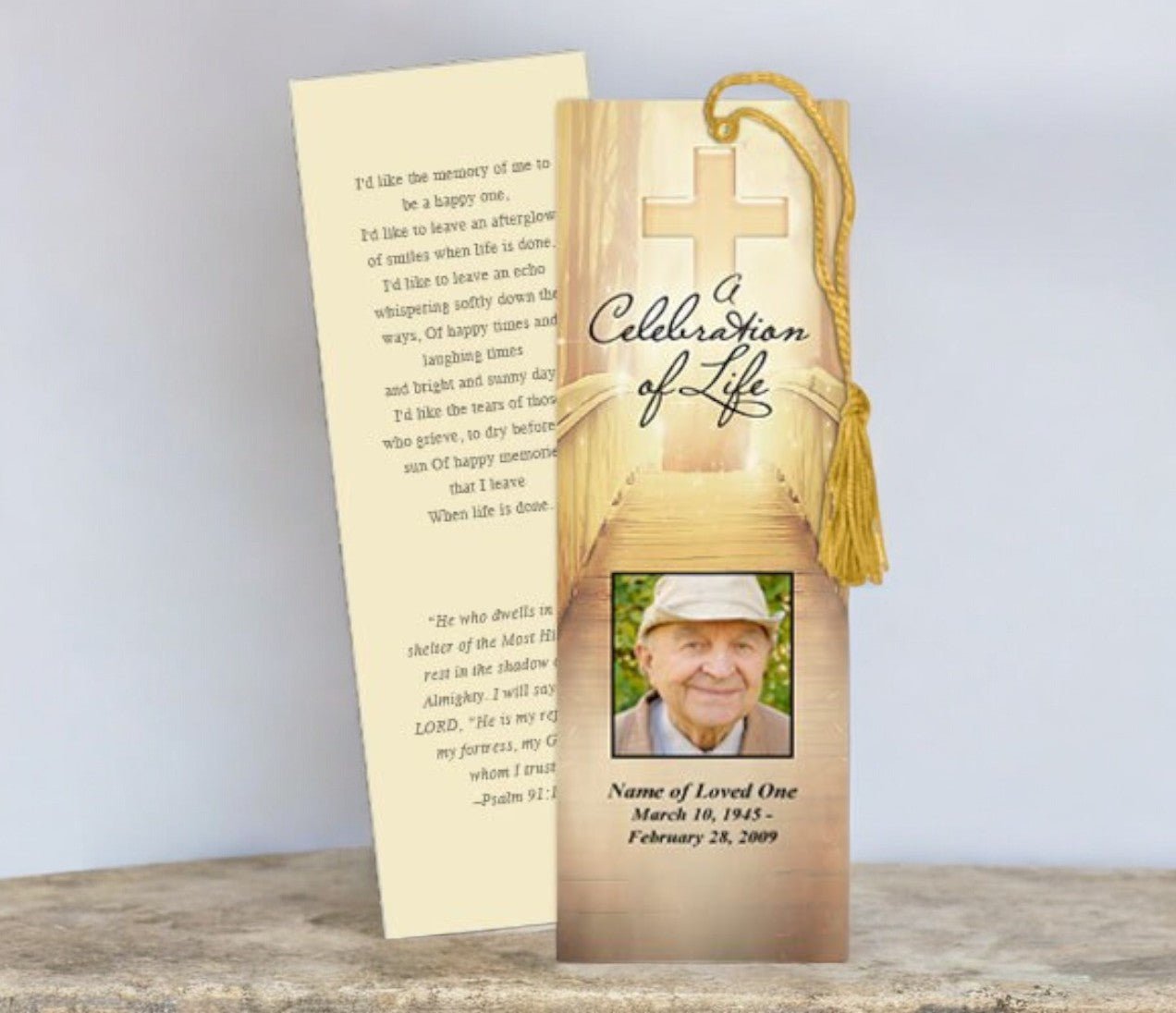What Is the Best Material for Homemade Bookmarks?

Creating memorial bookmarks at home is a meaningful way to honor a loved one while offering a thoughtful keepsake to family and friends. Whether you’re planning a funeral, memorial service, or a personal tribute, choosing the right material is essential to ensure durability, quality, and presentation. But with so many paper types and finishes available, what is the best material for homemade bookmarks?
Understanding the Purpose of Memorial Bookmarks
Memorial bookmarks are small printed tributes featuring a loved one’s name, photo, and a special message such as a quote, scripture, or poem. They’re designed to be kept inside a Bible, journal, or favorite book as a quiet reminder of love and remembrance. Because they are meant to be handled, stored, and cherished long-term, the material used for homemade bookmarks matters just as much as the design.
The ideal material should be sturdy, resistant to wear, visually appealing, and compatible with at-home printers or small-scale laminating equipment. Let’s explore the most recommended materials and their pros and cons to help you choose the best fit for your project.
1. Heavy Cardstock (80–110 lb Cover)
Heavy cardstock is the most common material for homemade memorial bookmarks. Ranging from 80 lb to 110 lb cover stock, this paper is thicker than standard copy paper and provides a premium feel and durability. It holds color well and can be printed using most inkjet or laser printers without jamming.
Pros:
- Easy to print at home
- Stiff enough to withstand frequent handling
- Available in various textures and finishes (matte, glossy, linen)
Cons:
- Not waterproof or smudge-resistant without lamination
- Requires careful cutting for clean edges
2. Laminated Cardstock
For added longevity and a professional finish, many people laminate their memorial bookmarks. After printing on heavy cardstock, the bookmarks can be sealed in laminating pouches using a laminator or self-sealing sheets. Lamination protects against creases, spills, and fading, making the keepsake more durable over time.
Pros:
- Water- and tear-resistant
- Adds a glossy, professional appearance
- Great for long-term preservation
Cons:
- Requires laminating equipment or self-adhesive materials
- May add glare under bright light
3. Textured or Linen Cover Stock
For a refined, tactile finish, linen or textured cover stock adds elegance to your bookmarks. These paper types are slightly more expensive but offer a unique, soft finish that’s ideal for memorial settings. Linen textures add a subtle woven pattern that elevates the design.
Pros:
- Elegant and professional appearance
- Suitable for minimalist and traditional designs
Cons:
- May not absorb ink as sharply as smooth cardstock
- Limited availability in some stores
4. Recycled or Kraft Paper
For environmentally conscious families or rustic-themed services, kraft or recycled paper can be a charming and sustainable option. These papers come in earthy tones and natural textures, perfect for handmade or nature-inspired memorials.
Pros:
- Eco-friendly and biodegradable
- Rustic, warm aesthetic
Cons:
- Text may not stand out well on darker tones
- Less durable than coated cardstock
5. Printable Photo Paper
Glossy or satin photo paper can be used for bookmarks that emphasize photographic tributes. While more fragile than cardstock, photo paper delivers vibrant image quality and is suitable when laminated afterward.
Pros:
- Best for full-color photo designs
- Ink dries quickly with most printers
Cons:
- Can be prone to bending and fingerprints
- Should be laminated for durability
What to Avoid
Standard printer paper (20–32 lb bond) is not ideal for making memorial bookmarks. It’s too thin, bends easily, and doesn’t hold ink or toner as well as cardstock. It may also tear when handled or mailed. Thin paper often looks unprofessional and diminishes the emotional impact of a printed tribute.
If you must use basic paper, consider reinforcing it with a second sheet or mounting it on cardstock before trimming and laminating. For long-lasting quality, however, it’s best to start with a sturdy foundation.
Best Practices for Printing
- Use the highest print quality setting on your printer
- Allow ink to dry fully before handling
- Print a test page to check margins, spacing, and colors
- Trim carefully using a paper cutter for even edges
If you're printing multiple bookmarks, arrange 3–4 per page to optimize your cardstock and save time on cutting. Templates found online are often formatted this way and include crop marks or bleed guides.
Design Tips to Match Your Material
When using textured cardstock, avoid ultra-thin fonts or light gray text, which may get lost in the texture. For glossy or photo paper, use bold and vivid colors, as these will appear crisp and defined. With kraft paper, choose dark ink and simple line art for a minimalist aesthetic.
If laminating, design with a small margin around the border to allow room for sealing. Avoid designs that extend completely to the edge if you plan to cut after laminating, as this can break the seal and lead to moisture issues.
Optional Enhancements
- Tassels: Add ribbon or cord at the top for a traditional finish
- Rounded corners: Use a corner punch to soften edges
- Foil accents: Add subtle metallic touches using foil transfer sheets
Conclusion
The best material for homemade memorial bookmarks depends on your goal: durability, elegance, environmental sustainability, or photo quality. For most projects, 80–110 lb cardstock offers the best blend of affordability, print quality, and handling ease. Lamination and added features like ribbon or texture can elevate the final piece into a treasured keepsake.
Explore professionally formatted examples and downloadable templates at memorial bookmarks, memorial bookmarks, and memorial bookmarks to get started. With the right materials and a little creativity, your homemade bookmark can become a beautiful tribute to someone deeply loved and dearly missed.


































